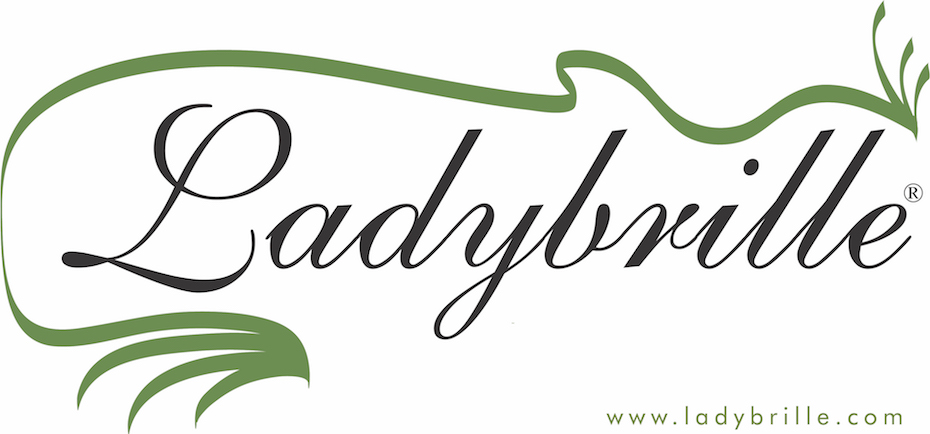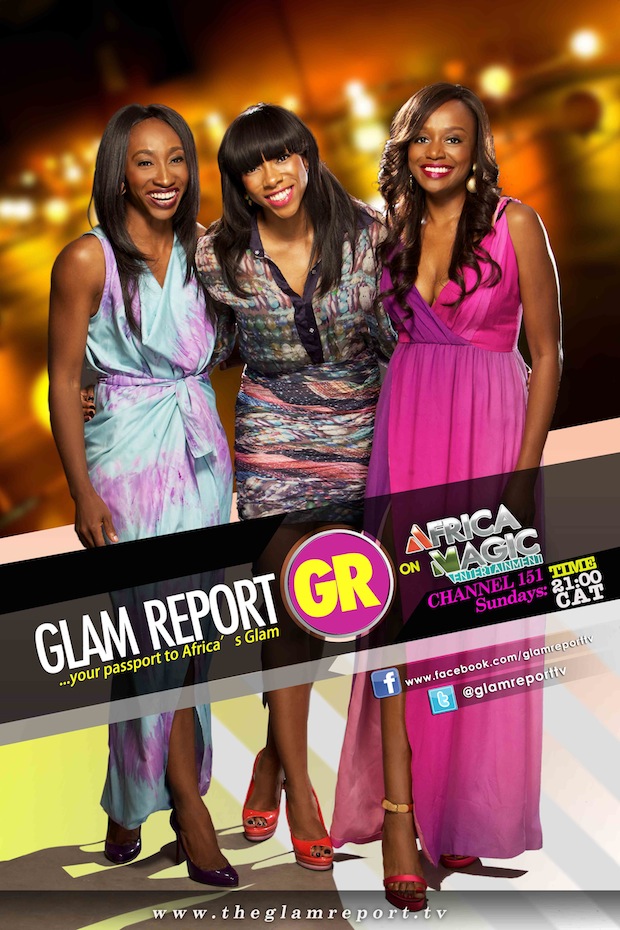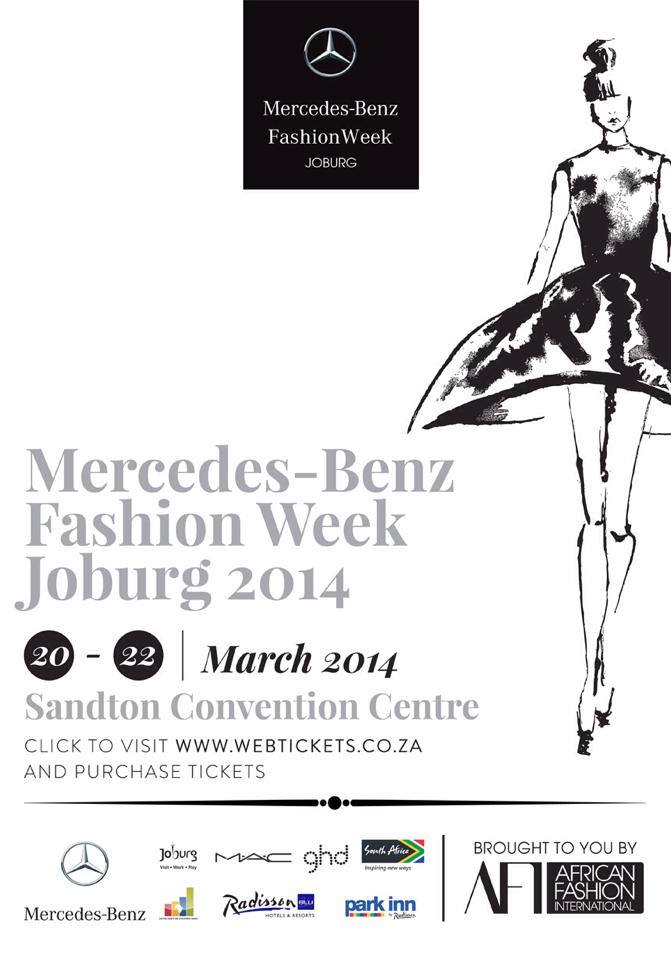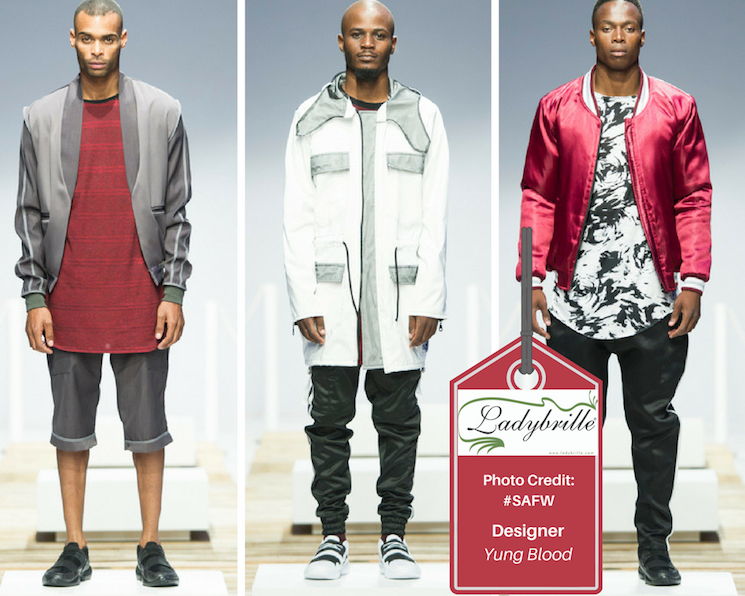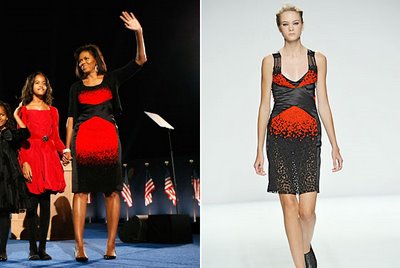 Fashion-watchers the world over were more concerned about what Mrs. Obama was wearing on the historical night when her husband took the US elections by storm. Her choice of dress has and continues to be the source of long debates within the fashion world. However, the most important point from the ongoing debate around Mrs O’s choice of clothing is she wore a design made by an American designer. I then thought about our local politicians and wonder how many of them wear clothing made either by South African designers or manufactured in South Africa? Our politicians have the platform and the money to promote local designed and made apparel. Instead of spending money on stupid adverts the Proudly South Africa – “buy local” campaign should be lobbying government officials to all wear locally made clothing. On that point I also wonder if the Proudly South Africa CEO and staff all wear made in South Africa clothing?
Fashion-watchers the world over were more concerned about what Mrs. Obama was wearing on the historical night when her husband took the US elections by storm. Her choice of dress has and continues to be the source of long debates within the fashion world. However, the most important point from the ongoing debate around Mrs O’s choice of clothing is she wore a design made by an American designer. I then thought about our local politicians and wonder how many of them wear clothing made either by South African designers or manufactured in South Africa? Our politicians have the platform and the money to promote local designed and made apparel. Instead of spending money on stupid adverts the Proudly South Africa – “buy local” campaign should be lobbying government officials to all wear locally made clothing. On that point I also wonder if the Proudly South Africa CEO and staff all wear made in South Africa clothing?
The more I reflected on the fashion debate about the frock worn by Mrs. O on the historical night which was criticised as an “eyesore” to it looking like a “lava lamp” I thought who the American designer Narciso Rodriguez is and how and under what conditions are his clothing made? Page upon page has been written to discuss “the stupid criss-cross band around the middle” of Mrs Obama’s dress but there has been nothing about his (Rodriguez) links to a company that has an appalling human rights record.
Yes, Mrs. Obama may be wearing an American designers clothing which in of its self is great. How and where was the dress made? Narciso Rodriguez is a Cuban-American who once worked for Calvin Klein. He is the recipient of Vogue/VH1 Fashion Rocks award for best designer. In 2007 fashion goliath Liz Claiborne acquired a 50% interest in his label (Rodriguez was in a financial crisis and had to sell urgently – to anyone) bringing a sinister corporate ethos to the designer’s label.
Founded in 1976 Liz Claiborne is a fashion company that designs and markets a wide variety of clothing. In 2006 it posted nearly $5 billion in sales through its 30 000 global retail locations. The current global recession hitting the apparel and luxury goods industries resulted in Liz Claiborne (trading under Claiborne) “slashing its fourth-quarter profit forecast with shares dropping by 4.3%.”
The company has been embroiled in numerous legal disputes and allegations about its ethical practices within it value-chain and this dilutes Rodriguez’s brand by association. The Claiborne Empire has and continues to insult Native Americans by naming an apparel line “Crazy Horse.” Despite protests the company continues to snub Native American appeals to change the name. With the CEO making approximately $12 million a year, numerous human rights and sweatshop monitoring organisations have expressed concerns about its labour standards.
In 1999 the company faced a lawsuit when two Human Rights Organisations filed a complaint on behalf of 40, 000 garment workers in Saipan where workers were allegedly subjected to physical abuse.
In 1999 the company crushed five attempts to organise a union in a factory based in El Salvador that was making some of its clothes. The women workers were earning 74 cents for every $198 Claiborne jacket they made and 58 cents for every $118 pair of pants.In 2000 a factory in Indonesia making clothing for the company was hit by a strike involving more than 4000 workers because non payment of an Annual Bonus.
In 2001 intimidation of workers and union officials occurred in a factory in Guatemala that supplied the company. In 2004 it was discovered that the company was using factories in Bangladesh which is known for sweatshop conditions.
Recent reports indicate that the American designer and Liz Claiborne will be or have split ending a short partnership. According to insider knowledge Rodriguez will buy back 50% of his name and trademarks. The decision by the designer is a wise and calculated move. Undoubtedly, he will make a fortune because of Mrs. Obama’s choice and maybe he does not wanted to be tainted by Claiborne’s poor procurement record.
The main point of this article is that there is always a story behind the dress, the designer and the company and all fashion watches must look beyond the silhouettes and the glamour. It is vital to unstitch and pick at the seams that hold our apparel together. Companies implementing fair trade and ethical practice have no reason to be fearful of such scrutiny. They should embrace it and exploit their “good practice” as exemplars of what can be done in this important global industry that employs millions of people.
Renato Palmi runs a fashion research firm called “The ReDress Consultancy” in South Africa. His work focuses on advising the government and fashion institutions and its players on reshaping development, especially in South Africa’s Textile and Apparel Industries. He is also a recent author with his book, “Inside Out-South African Fashion Designer Sewing Success.” You can reach him at: [email protected]
Founded in 2007, Ladybrille® Magazine is a California based pioneer digital publication demystifying the image of Africans in the west through contemporary African fashion and celebrating the brilliant woman in business and leadership, with an emphasis on the African woman in the diaspora. Our coverage includes stories on capital, access to markets, expertise, hiring and retention, sales, marketing, and promotions.
